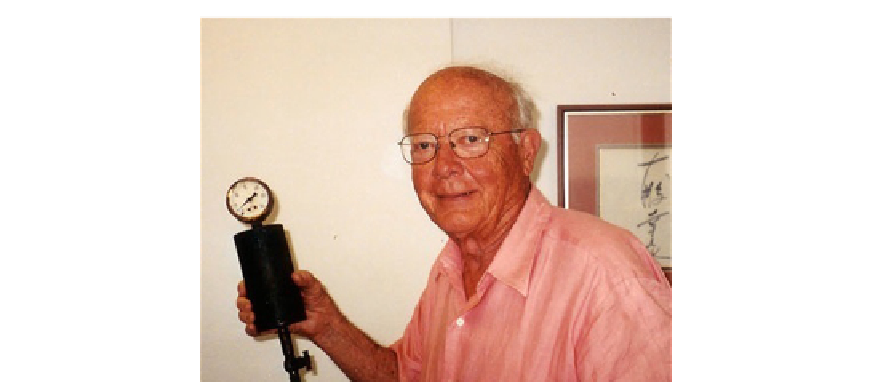Biology Reference
In-Depth Information
FIGURE 8.4
Andrew A. Benson (1917
e
). Reproduced with permission
[28]
.
work on the Calvin-Benson cycle of photosynthetic dark reactions. David Greenwas a leading
expert in the field of mitochondria, whose reputation was based on fracturing the mitochon-
drial electron transport/oxidative phosphorylation system into five isolatable complexes.
Partial or complete mitochondrial oxidative phosphorylation could be reconstituted by
simply mixing the appropriate complexes. Therefore both Benson and Green were experts
on highly specific and sophisticated membranes, Benson the photosynthetic thylakoid, and
Green the bioenergetic inner mitochondrial membrane. Both of these membranes are at the
upper range of membrane protein/lipid ratios. Therefore, in these complex membranes
the lipid bilayer would likely be reduced. Both the Benson and Green models were essentially
a lipoprotein monolayer devoid of a lipid bilayer (
Figure 8.3
).
The Green model (also called the Protein Crystal model) was particularly well
described. In his 1970 Proceedings of the National Academy of Sciences paper
[9]
,Green
states, 'The essential principle underlying this model is that when membrane proteins
polymerize, the points of contact between proteins are few, and cavities lined with
predominantly non-polar amino acids are formed. Phospholipid molecules become
oriented with the fatty chains inserted into the cavities while the polar heads remain
on the surface of the membrane. This orientation applies to both faces of the membrane
continuum. All the lipid known to be present in membranes can be accommodated in this
manner.'
Therefore, no lipid bilayer was required. While this proposal was quite interesting, it failed
to explain membrane structure for most membranes, ignored the rapidly accumulating data
on the lipid bilayer-based models (for example, lateral diffusion discussed in Chapter 9),
and ignored the likelihood that a single mutation could destroy the entire membrane. These
lipoprotein-based membrane models disappeared with the advent of Singer's Fluid Mosaic
model. Before they vanished, however, they did clearly indicate a major problem with all
membrane models, the lipid bilayer 'sea' must be very limited in scope and must be very
crowded (see Chapter 11,
[10]
).

